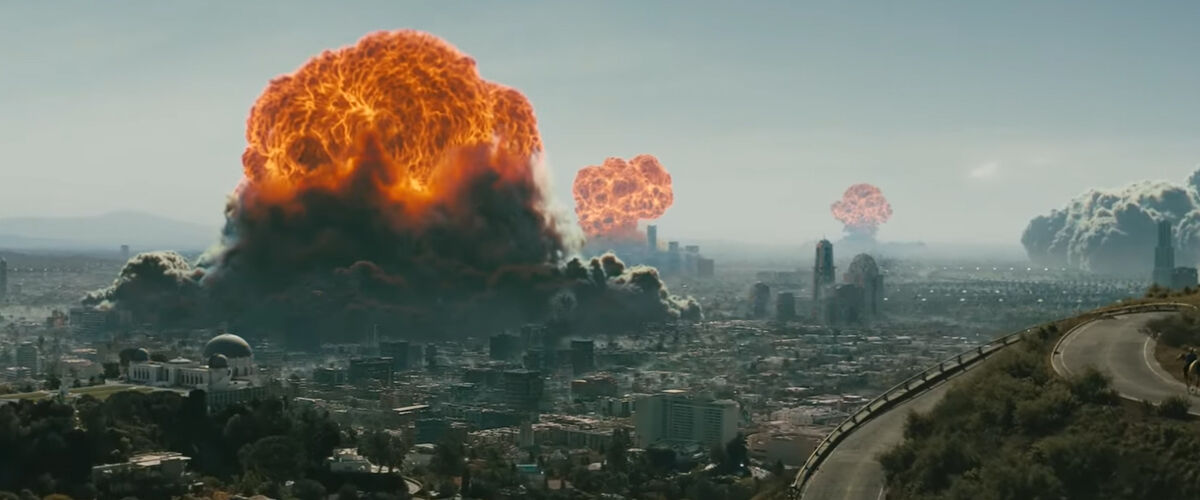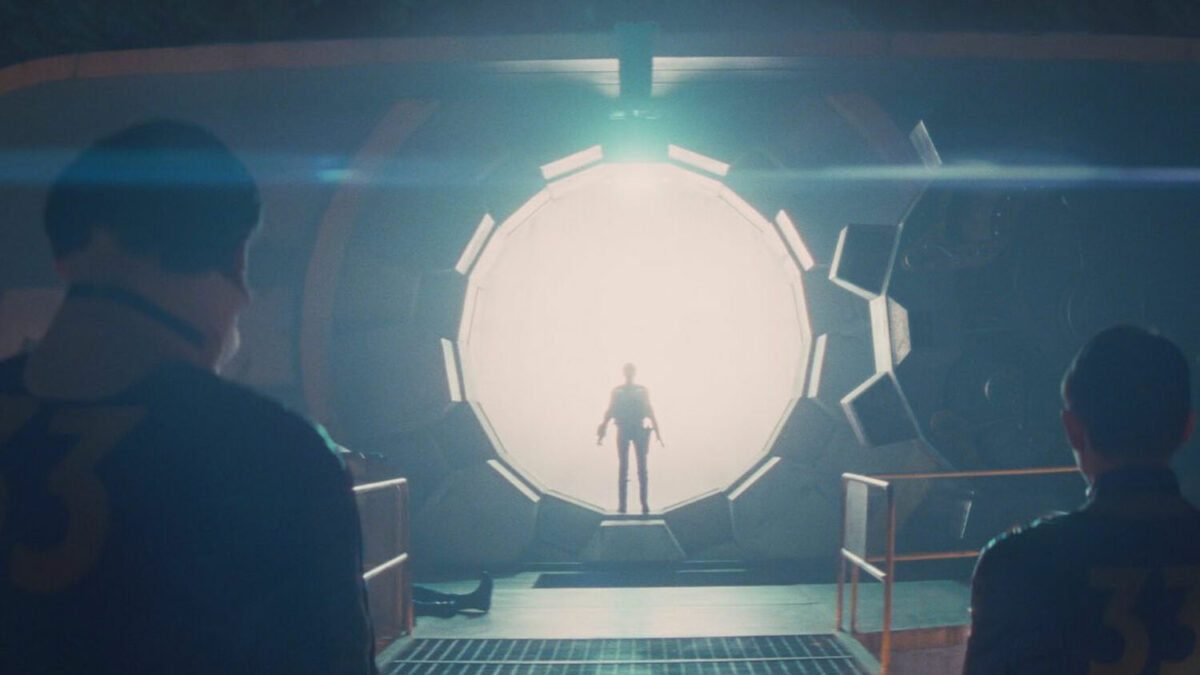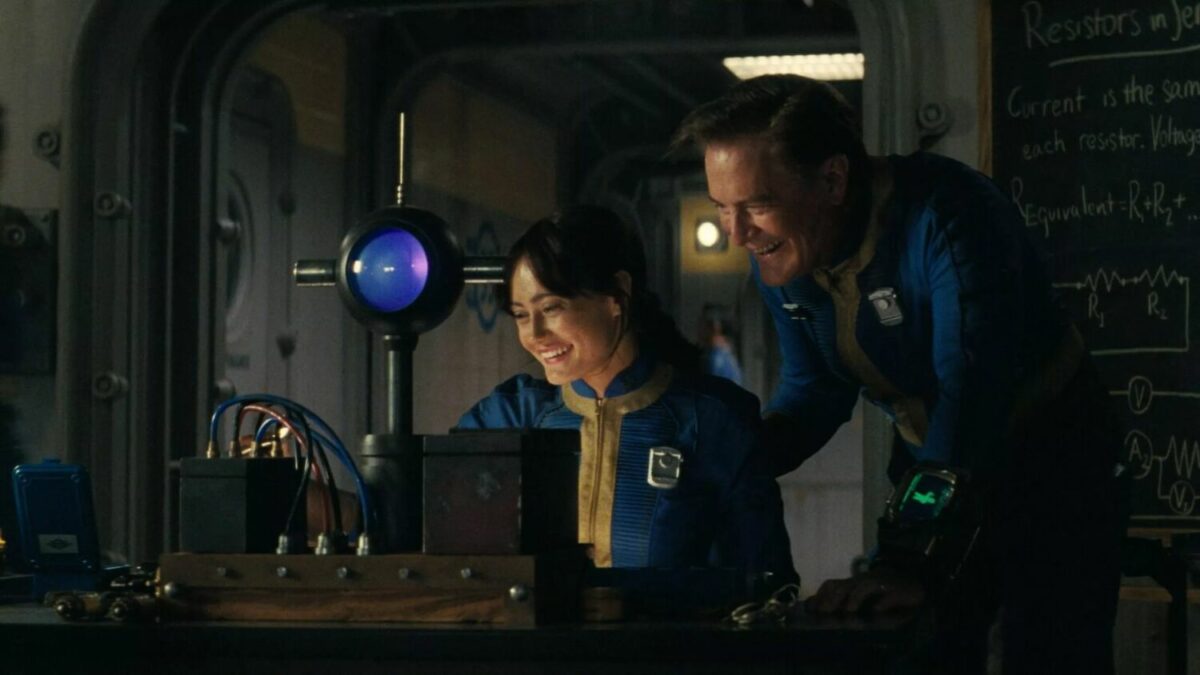This review is based on the first four episodes of the Fallout TV series.
It’s a political satire that explores nuclear folly and American consumerism, baked with a layer of 1950s nostalgia and post-war culture from that era. To call Fallout, the live-action adaptation of the highly regarded game franchise, a property with explosive potential would be an understatement, especially when it’s now on Amazon Prime Video, steered by Jonathan Nolan of Person of Interest and Westworld fame.

Set in a post-nuclear apocalypse after a thermonuclear war ravages the United States and forces citizens into underground dwellings, or Vaults, if they’re (un)lucky enough, for 200 years. Naturally, not everyone made it the the Vaults and for those who remained, and survived, America has now become a lawless wasteland, with the show’s conflict set in the West Coast. These mutated remnants of a society gone wrong have been left to face the full aftermath of the blast, turning into irradiated but not always mindless ghouls who struggle to retain their humanity. With raider gangs and militaristic faction Brotherhood of Steel fighting for control of the wasteland, rumours of a scientist who possesses the knowledge to change the fate of the world lead to an all-out manhunt.

If it’s a familiar world to the millions of video game fans, that’s because this small screen adaptation doesn’t merely lift elements or is simply heavily inspired by the Bethesda Game Studios franchise of the same name – it shares the same universe as the popular games, with very close links to the latest entry, 2015’s Fallout 4, which took home Game of the Year, As one of the more modern takes on the Fallout game franchise, Fallout 4’s open world format and expansive storyline makes it the perfect base to build an introduction to the series, and since this show is set a mere nine years after the game, it can be considered a mini-prequel to a potential Fallout 5 game.
Unlike the games, which focus on a singular protagonist, the series has the creative freedom to explore other character perspectives, as it brings together three main characters – idealistic vault dweller Lucy (Ella Purnell), troubled Brotherhood of Steel recruit Maximus (Aaron Moten), and gunslinger cowboy The Ghoul (Walton Goggins).

Fresh off the HBO’s award-winning Westworld TV series, Nolan is well placed to deliver the nuances of human society in the future, as there are similar parallels between both titles, even as Fallout gets the benefit of having more fun and taking itself not so seriously. As the director of the first 3 episodes, Nolan sets the tone right as we enter the wasteland, and together with Lisa Joy (who serves as executive producer), the husband-and-wife duo are passionate about the game’s adaptation with their attention to detail, and as a fan of the game, reverence to the source material. Considering that the Fallout universe has been well established, it falls onto Nolan to bring the world to life, and is he definitely in his element, kickstarting things with an explosive bang. Co-writers Geneva Robertson-Dworet (Captain Marvel) & Graham Wagner lend their expertise to the show, crafting a compelling narrative.
No expense has been spared around the visual effects, which have been calibrated to closely match its video game counterpart. Even translating the more iconic aspects of the game, including the V.A.T.S (Vault-Tec Assisted Targeting System) combat system (which allows players in the game to pause the action and aim for enemies’ specific body parts), Nolan has been able to communicate the spirit of the system without alienating any casual first time viewer of the show. While there are certain segments of the show where the visual effects have fallen short, the intentionally comical nature of Fallout allows us to suspend disbelief with a good amount of gore – just like the games.

Leading our trek into the wasteland, Ella Purnell’s (Yellowjackets) Lucy has lived an idyllic life as the daughter of Vault 33’s overseer, but her seemingly utopian life is soon turned upside down when a series of events forces her to traverse the wasteland in search of her father. Purnell delivers a solid portrayal of Lucy’s transformation from naive Vault dweller to rugged survivor, but still keeps her tempered optimism. Unlike the wasteland’s rugged and jaded survivors, her character brings a much-needed breath of fresh air to the series, serving as a character foil to The Ghoul, a seasoned bounty hunter.

Played by Justified star and well-known character actor Walton Goggins, the nameless ruffian survived the nuclear blast, but was transformed by the radiation into a Ghoul – a heartless, soulless, and jaded thug, struggling to retain his humanity or risk losing it. Goggins gives the character his signature cynical cowboy flair carried over from his work on Cowboys & Aliens and while shunned by the world, Gorggins finds himself well adapted to the morally-grey nature of the wasteland, as he’s constantly challenged by Lucy’s constant optimistic outlook.
Fallout finds its third protagonist in Brotherhood of Steel initiate Maximus, who struggles to find his place among the Brotherhood of Steel’s brutal order, and might be the less familiar of the three, as not only does he carry the character’s gradual development with plenty of range, Moton also gives us a peek into the inner workings of the Brotherhood, an aspect from the game that has been rarely explored.

Like the games, there’s gore and violence aplenty, and the main threat comes from raider leader Moldaver (Sarita Choudhury), a woman to be reckoned with in the Wasteland. Her character is not as established as the others, given her limited screen time in the first half, but the second half is likely to expand more on the raiders’ motivations.
The game itself has some pretty expansive worldbuilding, and the first episode of the show serves as a prologue that sets its plot threads in motion, but also ensuring that new viewers to the series get slowly accustomed to the world, by taking its time to develop the political intricacies of the Vault and Brotherhood of Steel. The plot does pick up in subsequent episodes once it concludes the heavy lifting with the hunt for renegade scientist Wilzig, and merges all three characters and their storylines.
Despite being an apocalyptic wasteland, the set design in the series is a treat, and some scenes transport you into the game itself, exploring the various cities along the West Coast and of course, discovering the true nature of the Vaults, which is a mainstay in all the Fallout games. And of course, the games’ various deadly fauna makes an appearance, and it’s fun to watch the series’ protagonists deal with these threats. The end credits of each episode also give viewers an in-depth look into the post-apocalyptic landscape, and each one is different, so you’ll want to stick around even when the credits start to roll. Its locations, while adding something entirely new, look familiar, and seeing some iconic places, like a refreshed Super Duper Mart being brought to life with realistic detail, is simply stunning.

Fallout games also have a memorable soundtrack that plays when players activate the game’s radio channels, and the show retains that essence mechanic by having the game’s music play over certain scenes. Some of the more iconic songs, like the Ink Spots’ I Don’t Want To Set The World On Fire, and Nat King Cole’s Orange Colored Sky are sprinkled throughout, and while the abundance of 50s’ music might be jarring to new viewers, it’s very much a stylistic aspect of the game, and gets toned down towards later episodes. There are also several blink-and-you’ll-miss-them easter eggs populating the show, and eagle-eyed fans will want to look out for them, and this where the show’s decision for subtlety in its callbacks works to its advantage.
The show functions as a solid introduction to the games for the uninitiated, and stays faithful to the world of the games while giving long-time fans a new set of intriguing characters and adding on to the lore.
GEEK REVIEW SCORE
Summary
Fallout incorporates elements from its source material while telling a compelling story, with plenty of nostalgia sprinkled throughout.
Overall
8.5/10-
Story - 9/10
9/10
-
Direction - 8/10
8/10
-
Characterisation - 8/10
8/10
-
Geek Satisfaction - 9/10
9/10













